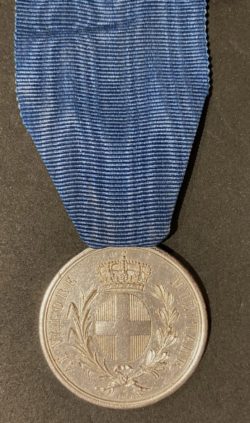Exceptional Conspicuous Gallantry Medal group for the withdrawal from Crete group for gallantry when the destroyer H.M.S. Havock came under heavy air attack on 23 May 1941, he continued to man his gun ‘after having half his back shot away, and refused to be looked at’
£13,950.00
Out of stock
Conspicuous Gallantry Medal, (GVI). ( A.B. H.M.S. Havoc), 1939/45 Star, Atlantic Star, Africa Star, clasp, North Africa 1942-43, War Medal
C.G.M. London Gazette 8 January 1942: ‘For outstanding gallantry, fortitude and resolution during the battle of Crete:
Able Seaman Rodney Bridge, C/SSX. 28291, H.M.S. Havock, who stood by his gun, though grievously wounded by an enemy bomb, and went on firing without thought for his injury.’
Rodney Bridge was serving as a gun layer on Havock’s ‘A’ gun at the time. As part of Force ‘E’, the destroyer, and three of her consorts, had accompanied the cruisers Orion and Ajax on a patrol off Heraklion, Crete, on the night of 21-22 May 1941, entering the Aegean via the Kaso Strait. On returning to Alexandria on the 23rd, the force was dive-bombed for five hours.
An account of the engagement was written by Midshipman Napper who was aboard Havock
‘Friday 23 May:
This was the beginning of the attack. To start with, we were bombed by Ju 88s and Heinkels, with no result. It was annoying, but hardly dangerous. Then they disappeared and 6 Stukas arrived on the scene. Each destroyer was dived at in turn, sometimes by 3 aircraft together, sometimes by less. We had to be very careful with our 4.7-inch ammunition as we had exhausted a large percentage of it, but our supplies of .303 were limitless. I myself had a Bren gun, with which I tried to hit the aircraft when they got too low for our 4.7-inch to elevate to the required angle. Some of the tracer bullets seemed to be going straight into the propellers. One aircraft crashed into the sea soon after and the pilot bailed out. Two others went away very low over the water with smoke pouring from them.
At last after 5 hours of spasmodic bombing, we had a very near miss, which flooded the boiler room and killed several people including a man on my gun who was standing just next to me and had a piece of shrapnel through the head. I had my cap blown off and sat down hard on the deck but was otherwise unhurt.
For a few moments we were stopped completely while the boiler was changed over and from then until we finally reached Alexandria, we left a trail of fuel oil behind.
In addition to the rating killed on my gun, one was badly wounded and another slightly, so that I had to take over as gun layer for the latter part of the firing. My job was fairly easy, as by this time the aircraft were diving and it was only a question of keeping the telescope on the target and not below.
The last visit we had was about 11.30 when an 88 dropped a stick close ahead. Making good 25 knots we reached Alexandria at 2000 and went alongside 46 shed to disembark the wounded. After this we shifted to alongside Resource, where we were given hot baths, food and beds.
Throughout the bombing the men behaved very well, especially one man on my gun [Able Seaman Rodney Bridge, subsequently awarded the C.G.M.], who went on doing his job (gun layer) after having half his back shot away, and refused to be looked at.’
Bridge received his C.G.M. from the King on 24 March 1942.
H.M.S. Havock had also been present a few weeks earlier (28 March, 1941) at the battle of Cape Matapan, where along with destroyers Stuart and Greyhound sank the Italian destroyer Vittorio Alfieri by gunfire with the loss of all but 35 of her crew














